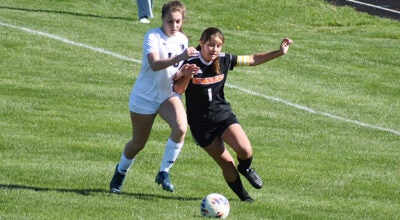Larry Lyons: Basic outdoor first aid part 1 – heart attack and stroke
Published 10:30 pm Tuesday, October 12, 2010
Well, it’s once again that magical time of year that beckons us afield. Some of us will be brandishing chain saws, others will be climbing trees with bow in hand or prowling the thickets or marshes with a gun.
The one thing these undertakings have in common is they include risk of serious injury. Even though major mishaps only happen to other people, never you, hedging your bet with some knowledge could mean the difference between life and death.
Few people are inclined to take a full-blown first aid course but at the very least you should carry some common sense first aid knowledge into the field with you. Actually, we’re not that concerned with treating sprains, burns and moderate cuts, making splints and slings and such. We’ll survive all of those injuries no matter what we do or don’t do. Our real concern is when things go really bad. Things like stroke and heart attack, a crash dive out of a tree, a run amok chain saw or errant gunshot. Thinking about and mentally rehearsing how to deal with such things now will help minimize panic and bad decisions should an event occur.
Modern technology has given us the best first aid tool the world has ever known, the cell phone. We no longer have to suck it up when injured and drag ourselves over hill and dale to reach help. We just punch 911 and call in the pros.
Consider it your safety net and buy a quality one with coverage in the area you’re going. Be sure it’s fully charged. You may be on it a long time directing rescuers to find you. And, of course, it’s useless if left in the truck and under some circumstances equally useless if buried in the bottom of a backpack or under four layers of clothing.
Heart attack and stroke are at the top of major outdoor risks. Everyone should be reasonably up to date in CPR training. You owe it to your companions and they owe it to you. Recently techniques have changed so what you learned 10 or 20 years ago probably isn’t the accepted procedure now.
Few people just keel over dead without warning so recognizing the signs are equally important. Heart attack symptoms can be the classic chest pains and difficulty breathing, but are often more benign. Heart burn, nausea, sweating and/or pain, tingling or numbness in the arm, shoulder or neck area are major red flags. Common stroke symptoms are a tingling feeling in the head, dizziness, headache, slurred speech and disorientation.
Everyone should carry a couple of aspirin when afield. An aspirin tablet at the onset of heart attack or stroke can be the difference between living and dying. You receive maximum benefit from just one pill but should you drop it or otherwise lose it a backup is good. Not even young, fit Tarzans are immune to these afflictions so you never know when the little pill just might save you or a buddy.
First aid for heart attack and stroke are the same. Should you (or your partner) suspect one might be occurring, pop the aspirin and call 911. Unless there are excruciating chest pains (heart attack) or debilitating dizziness (stroke) it’s an almost universal response to ignore the symptoms and assume you’ll be okay. That’s a deadly assumption. Try to stay calm. Most professionals feel it’s better to stay put to avoid exertion. This is especially so if you’re where you can be easily found or are in phone contact with rescuers. Certain circumstances may influence you otherwise but by thinking of this ahead of time it will be an informed decision.
What if you’re up in a tree stand at the onset? Only my opinion, but I would stay put. You’ll likely be to some degree impaired or may become so with the exertion of descending. A lot of people survive heart attacks and strokes but not so many a freefall from the treetops. Of course, you surely have your safety climbing harness rigged up, right? Rescue personnel may need that to get you down. Next week we’ll look at treating other common outdoor injuries.
Carpe diem.
Larry Lyons writes a weekly outdoor column for Leader Publications.
He can be reached at larry@lyonsgunworks.com





